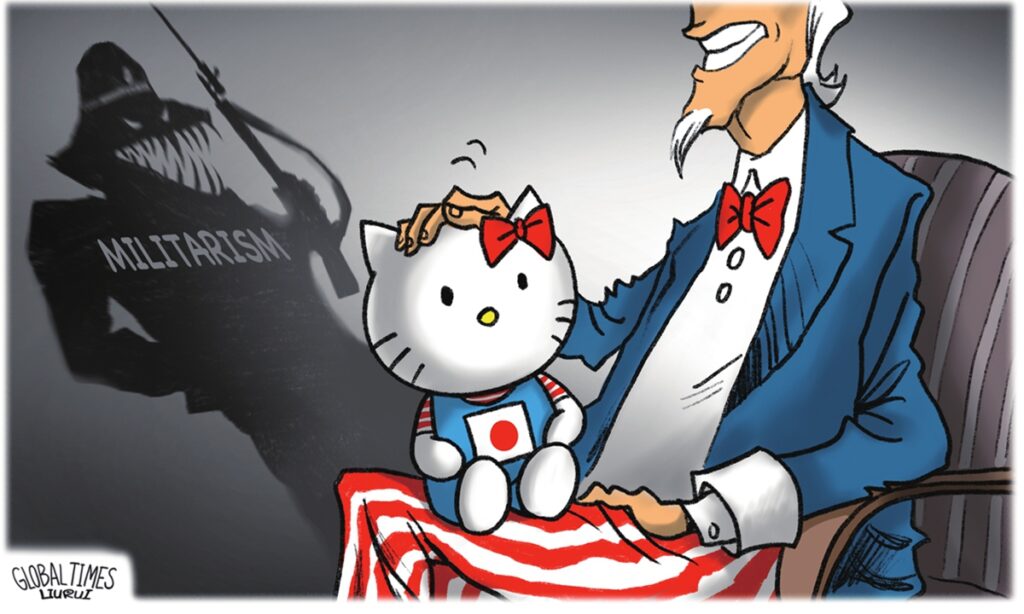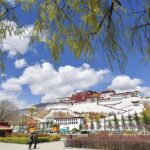From Tuesday to Thursday, Japan will host the Pacific Islands Leaders Meeting. Prior to the meeting, Japanese media brought up China, stating that the Japanese government “intends to deepen its involvement in the Pacific Islands, a frontline of the US-China conflict.” This inadvertently reveals Japan’s motives for hosting the meeting: The so-called support for the Pacific Island countries is actually an attempt to impose the strategic intentions of the US and Japan onto them, trying to pull them into the US’ Indo-Pacific Strategy.
According to The Japan News, the draft of the joint action plan to be adopted at the meeting in Tokyo includes seven priority fields, including peace and security, climate change and technology. Ironically, there is no sign of any subjective desire for peace and security from Japan at the meeting, especially given Japan’s plan to send Self-Defense Force aircraft and ships to the Pacific Island countries, which will certainly worsen the tense situation in the Asia-Pacific region.
Chen Hong, executive director at the Asia Pacific Studies Centre of East China Normal University, told the Global Times that the US, Japan, and their allies just want to turn the South Pacific region into a military base and instrumentalize, even weaponize, the Pacific Island countries. As the vanguard of the US’ Indo-Pacific Strategy, Japan is expanding its influence in the South Pacific region and does not hide its wild ambitions to expand influence in the Asia-Pacific region. Lü Chao, a research fellow at the Liaoning Academy of Social Sciences, said that in recent years, Japan has accelerated its military expansion under the pretext of the “China threat,” far beyond the needs of “self-defense.” Now it is aggressively increasing its presence in Pacific Island countries, expanding its military capabilities, and attempting to break through the pacifist Constitution to turn Japan into a so-called normal country.
The US, Japan and their allies have long ignored the true needs of the Pacific Island countries, and so-called aid is often attached with political strings. The draft of the joint action plan of this meeting is clearly mixed with the self-interests of Japan. The Pacific Island countries are now most concerned about climate change, while Japan is trying to persuade the region to accept its handling of nuclear-contaminated water in the draft. Lü believes that in this meeting, Japan is clearly paving the way with money, not only hoping to use 60 billion yen ($380 million) in development aid to win over some countries to support its own intentions and geopolitical strategies, but also to whitewash the fact of Japan shifting the risk of nuclear contamination to the whole world.
Japan glosses over the real concerns of Pacific Island countries while tirelessly focusing on geopolitical issues, disgracefully taking advantage of these countries’ vulnerabilities. Japan has exploited these countries’ aspirations for economic development to bolster its “financial presence” in the South Pacific region. Chen believes that Japan’s use of meager offerings to further its own geopolitical goals demonstrates a lack of respect for the South Pacific Island nations.
China has no interest in competing with the US in the South Pacific, but its growing cooperation with Pacific Island countries has caused unease among certain US-led nations. Encouraged by the US, Japan has proactively acted as a pawn in Washington’s anti-China strategies, demonizing China’s normal and friendly cooperation with the Pacific Island countries and exploiting the region for its hegemonic interests. It is foreseeable that Japan will continue to court the Pacific Island countries economically while exerting political and military pressure on them at the Pacific Islands Leaders Meeting.
However, these efforts are unlikely to be successful, as the Pacific Island countries have learned from centuries of dealings with the US, Japan, and their allies that these countries can never be relied upon.
Global Times




